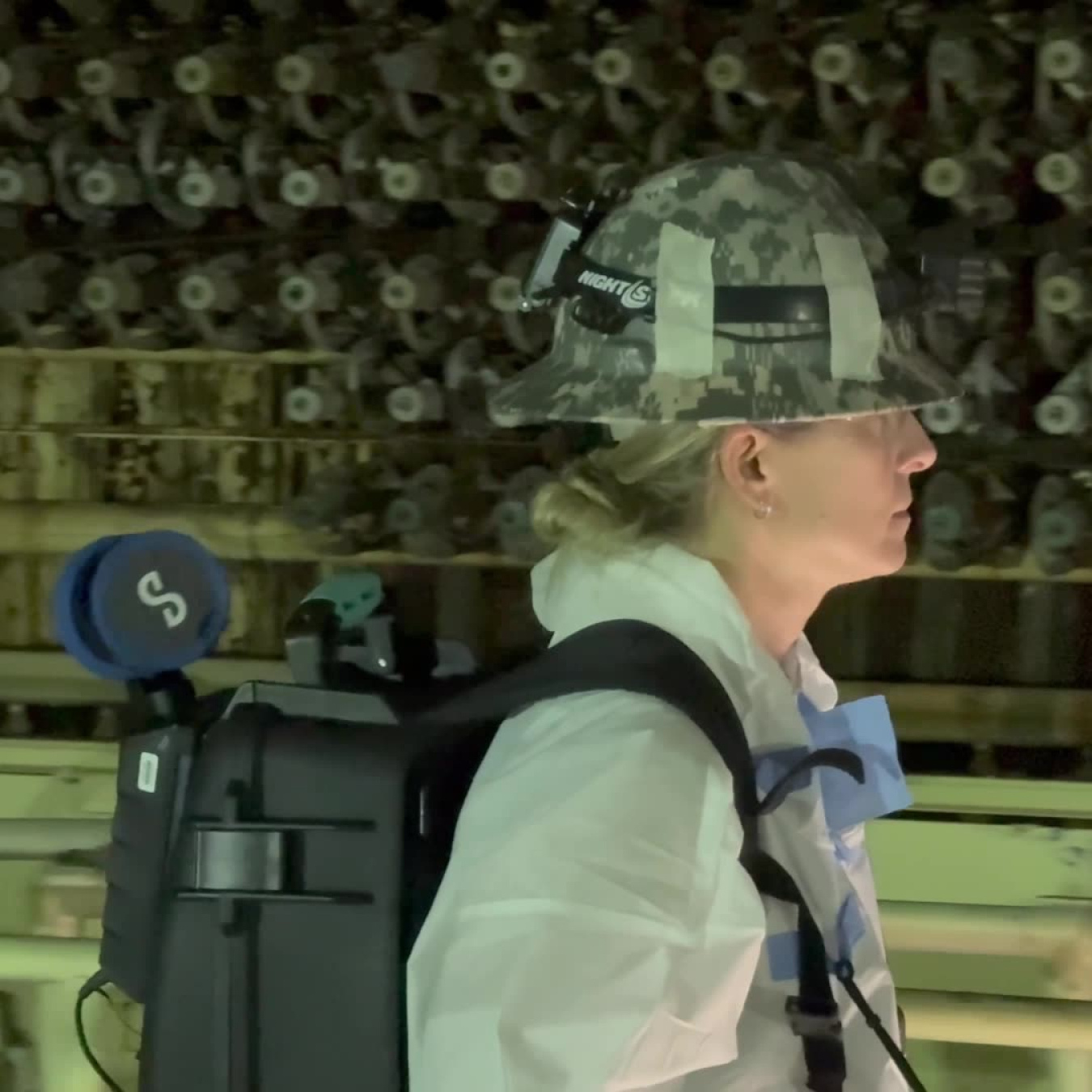Workers at the Department of Energy Office of Environmental Management Hanford Field Office used new imaging technology to inspect the Hanford Site’s decommissioned nuclear reactors, revealing a detailed look inside the sealed enclosures. August 19, 2025
Office of Environmental Management
August 19, 2025Members of the Engineering and Long-Term Stewardship teams at Hanford Mission Integration Solutions inspect the interior of the F Reactor enclosure for structural changes since the last inspection.
RICHLAND, Wash. — Workers at the U.S. Department of Energy Office of Environmental Management (EM) Hanford Field Office (HFO) used new imaging technology to inspect the Hanford Site’s decommissioned nuclear reactors, revealing a detailed look inside the sealed enclosures.
Putting this new technology to use at Hanford is part of EM's commitment to innovation and efficiency, focusing on priorities and reining in costs without sacrificing safety or effectiveness — all to deliver more to the American taxpayer.

Long-Term Stewardship Project Manager Deanna Breckon uses a lidar backpack to map the interior of the F Reactor enclosure.
Crews from HFO contractor Hanford Mission Integration Solutions (HMIS) recently completed routine 10-year internal inspections of the safe storage enclosures for six cocooned reactors, as part of its Long-Term Stewardship Program.
"These inspections are critical to ensuring the cocooned reactors continue to function as designed," said Tashina Jasso, acting director with the HFO’s Site Stewardship Division. “The inspections are part of our commitment to reducing risk and preserving infrastructure for long term management and safe disposal.”
Lidar technology creates detailed imaging by scanning the interior structure of cocooned reactors at the Hanford Site, supporting future monitoring and safety planning.
These inspections required meticulous planning and collaboration among engineers and safety specialists. Unlike the yearly checks that focus on the exterior of the enclosures using drones, these explored the interior of the structures.
A key feature was the use of lidar technology, which created 3D models of the storage enclosures. This advanced tool provided a detailed picture of conditions and helped identify potential issues.
"Lidar technology has been a game-changer in how we assess these structures," said Deanna Breckon, project manager with HMIS Long-Term Stewardship. "It allows us to see things we couldn't before and ensures we are taking the right steps to maintain safety."
To receive the latest news and updates about the Office of Environment Management, submit your e-mail address.



